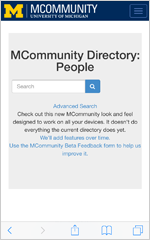Donald Welch joined U-M on April 1 as the University of Michigan Chief Information Security Officer (CISO). As CISO, Don is responsible for the university's information assurance program, covering the Ann Arbor, Flint, and Dearborn campuses, as well as the Health System. The information assurance program includes IT security, privacy, IT policy, compliance, and enterprise continuity.
Don has met with many people across the university already to learn aboutU-M IT security needs and will meet with more in the months ahead. "I am talking to as many people as I can, trying to understand what they do and what I can do to help them," said Don. He explained that the security strategy will, among other things, address categories of university information and the policies and controls around them.
"The ultimate goal of this work is to effectively manage risk while enabling the university to excel at accomplishing its mission," said Don. "To reach that goal, it will be important to continue to strengthen the IT security community across the entire university."
"I am enormously impressed with the enthusiasm and ideas shared with me thus far," Don said, "I am proud and excited to be a part of this community."



